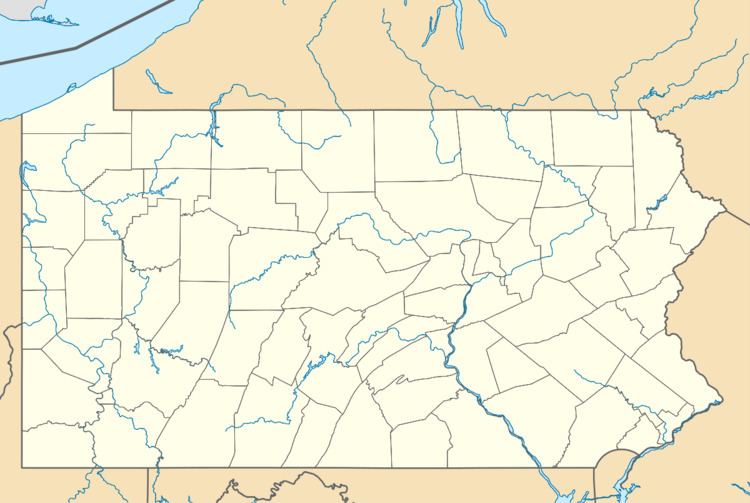Governing body/owner None Address Moosic, PA 18507, USA | Built/founded 1886; 1905 PA marker dedicated August 9, 2008 | |
 | ||
Location Rocky Glen Rd., 1/4 mile off Rt. 502 Similar Nay Aug Park, Nay Aug Falls, Electric City Trolley Museum, Williams Grove Amusem, Everhart Museum | ||
Tour of the rocky glen park in 1990 gphs
Known by a variety of names over its 101-year existence, Rocky Glen Park was a park near Moosic, Pennsylvania, USA. Founded by Arthur Frothingham in 1886 as a picnic park, it was transformed into an amusement park by engineer and entrepreneur Frederick Ingersoll in 1905. The trolley park was a popular Pennsylvania attraction that featured rides, arcades, and restaurants - even as a "wild west" theme park in the 1970s - until its closure in 1987.
Contents
- Tour of the rocky glen park in 1990 gphs
- Rocky glen park moosic pa the unofficial tour 2014
- History
- After the closure
- References
Rocky glen park moosic pa the unofficial tour 2014
History
Land developer Arthur Frothingham purchased the site for $15 at a tax sale in 1885. The following year, Rocky Glenn was open to the public as a picnic park. About 1900, Frothingham contracted E. S. Williams to dam Dry Valley Run Creek to create a lake on the property; when Frothingham failed to pay Williams for the work, Williams sued and was awarded one-half interest in the park.
Soon afterward, Frothingham obtained a Pennsylvania state cemetery charter for the park after learning of plans of extending tracks of the Lehigh Valley Railroad over the grounds. To avoid losing the park via eminent domain, Frothingham interred two bodies (one of a man who died in a mining accident, one of a man who died in a train accident) in the proposed route of the track; the Lehigh Valley Railway purchased a parcel of the cemetery for $25,000 and agreed to build a Laurel Line station nearby.
In 1904, Frederick Ingersoll added amusement park rides and concessions, and the newly rechristened Rocky Glen Park became a local sensation. The following year saw the debut of Ingersoll's signature figure eight roller coaster as the Pittsburgh engineer started diverting his energies to his soon-to-open Luna Parks in Pittsburgh and Cleveland (his Luna Park in nearby Scranton was to open the following year). A rift between park owner Frothingham and park manager Ingersoll led to the parting of their ways in 1906.
Interest in the park waned in the 1910s, and Frothingham wished to sell his half of the property. After failed attempts to sell the park to MGM and Federal Feature Film Corporation of New York, Williams and Frothingham sold it to a trio of businessmen (John Nallin, Joe Jennings, and Ben Sterling) in 1919. After a tumultuous period in which the three partners disagreed about park management (at one point, Rocky Glen Park was divided in two by a fence), Sterling ultimately gained complete control in 1950 and renamed the park Sterling's Rocky Glen, the name he used for his half of the park when it was divided (eventually the name was shortened to Sterling's).
By 1945, Rocky Glen Park's popularity was on the upswing when Sterling added the Million Dollar Coaster, a 96-foot-tall, 4700-foot-long, out-and-back roller coaster that became the park's new signature attraction. Despite its name, the ride cost Sterling only $100,000 to build. Shoehorned between Glen Lake and the tracks of the Lackawanna and Wyoming Valley Railroad, it was one of the world's largest roller coasters at the time. It carried more than one million passengers in the first three years of its existence (it was dismantled in 1957).
The post-World War II increase in use of the automobile contributed to the gradual decline in the use of the railroad, and the few remaining trolley parks were slowly fading into the sunset. Sterling's/Rocky Glen was no exception (its plight exacerbated by the decline in the coal industry at the same time), and by 1970, Ben Sterling opted to sell the park to an Atlanta, Georgia-based entertainment company, National Recreation Service.
The new owners promptly converted the grounds into a theme park, renaming it Ghost Town in the Glen (later Ghost Town Amusement Park) and gave it a western theme. The rebranding was not successful: the park changed hands once again in 1979 and became New Rocky Glen. The lake became a venue for concerts starting in 1980. The park closed for the last time in 1987.
After the closure
In 1988, the park's 1902-vintage carousel was sold in auction for $220,000 as the park's facilities were being dismantled. Later, the local congregation of Hare Krishna attempted to purchase the Rocky Glen Park grounds so it could erect a walled "City of God" on the site. Seven hundred residents signed petitions protesting the proposed sale, which fell through as a result.
